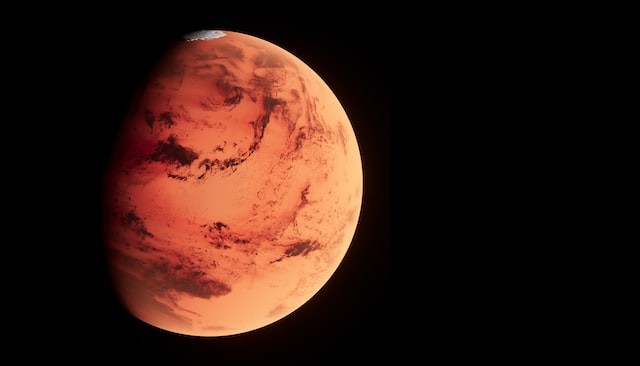The NASA robot has gathered a diverse collection of rock samples, which it will shortly deposit on the surface, awaiting transport to Earth by subsequent missions.
It's been 17 months since the vehicle arrived at Jezero Crater, hung beneath a rocket crane.
Everything "Percy" has observed subsequently indicated to scientists that the rover is in the ideal location to search for life.
It is not seeking living beings; the hostile climate on Mars makes their presence exceedingly unlikely. Rather, the robot is looking for signs of species that may have existed billions of years ago when Jezero was covered by a lake.
Nasa Mars rover collects 'amazing' rock samples
 (Photo : Planet Volumes/Unsplash)
(Photo : Planet Volumes/Unsplash)

NASA and the European Space Agency are devising a strategy to recover the rock stockpile.
It's a risky proposal that will entail another landing system, helicopters, a Martian rocket, and intergalactic cargo, as per the BBC.
The samples are expected to be returned to Earth around 2033.
The shipment will contain some igneous, or volcanic, materials that Perseverance drilled out on the crater bottom. These will mostly recount the narrative of Jezero before it was inundated by lake water.
Importantly, the samples are of a rock type that can be precisely dated.
At the moment, ages on Mars can only be deduced indirectly.
The cache will also contain sedimentary-type materials that Perseverance has been gathering in recent months from the delta deposits in the western portion of the 45km-wide crater.
A delta is a structure formed by the silt and sand deposited by a river as it delays its entry into a larger body of water.
It's the type of geological formation that might have trapped remains of previous microbial life.
One of the sedimentary samples, from a rock known as "Wildcat Ridge," was produced as mud settled in the evaporating Jezero lake. It's loaded with salts.
However, the rover's equipment reveals that Wildcat Ridge is also rich in organic, or carbon-rich, molecules.
Organics make up all of life as we know it. However, organic matter may also be formed by chemical processes that are unrelated to life, such as water-rock interactions.
Organics have also been discovered in interstellar dust, according to Sunanda Sharma, a mission instrument scientist at Nasa's Jet Propulsion Laboratory (JPL).
Perseverance has been working on the 40m-high scarp that symbolizes the delta's edge for the last four months.
The robot will soon drive off this slope to a nearby flat part of the crater floor where the rock samples may be dropped on the ground in their protective titanium tubes.
Nasa engineers have been practicing how the tubes, which are now in Perseverance's belly, will be expelled.
JPL has a full-sized replica of the rover on which to rehearse maneuvers before sending orders to Mars to carry out the tasks in real-time.
Nasa is likely to make a yes/no decision following a meeting on October 19.
It's possible that Perseverance's initial depot will serve as an insurance backup, to be retrieved and sent to Earth only if the rover experiences a catastrophic breakdown during the remainder of its mission.
Also Read: NASA Rover catches Amazing Image of Cat Loaf Rock on Mars
Terraforming a New Earth
Terraforming, which literally means "Earth-shaping," is the purposeful molding of another globe to make it habitable for humans, as per How Stuff works.
This will almost certainly include altering the world's climate, ecosystem, temperature, and geography, among other things.
So, what is involved in the ostensibly simple operation of altering the ecosystem of a whole planet? As an example, consider Mars.
Mars has always had a unique interest in the human imagination, as seen by the hundreds of novels and films about the planet that has been created in the last century alone.
Each scenario paints a different picture of what may exist on Mars.
What is it about Mars that has inspired so many stories? While Venus is commonly referred to be Earth's sister planet, the circumstances on that scorching planet are much too hostile to human life.
Mars, on the other hand, is the next nearest planet to Earth.
There are striking parallels between the current Martian atmosphere and the environment that existed billions of years ago on Earth.
When our planet was initially formed, there was no oxygen, and it appeared to be a bleak, unlivable world.
The atmosphere was solely composed of carbon dioxide and nitrogen. It wasn't until photosynthetic bacteria evolved on Earth that enough oxygen was created to support mammalian growth.
Similarly, today's thin Mars atmosphere is virtually entirely made up of carbon dioxide.
Related article: Patchy Proton Aurora: Astronomers Found a New Type of Mars Aurora
© 2024 NatureWorldNews.com All rights reserved. Do not reproduce without permission.


![Tsunami Hazard Zones: New US Map Shows Places at Risk of Flooding and Tsunamis Amid Rising Sea Levels [NOAA]](https://1471793142.rsc.cdn77.org/data/thumbs/full/70325/280/157/50/40/tsunami-hazard-zones-new-us-map-shows-places-at-risk-of-flooding-and-tsunamis-amid-rising-sea-levels-noaa.jpg)

![Climate Change is Reducing Dust Levels Worldwide as Arctic Temperature Warms [Study]](https://1471793142.rsc.cdn77.org/data/thumbs/full/70320/280/157/50/40/climate-change-is-reducing-dust-levels-worldwide-as-arctic-temperature-warms-study.jpg)
